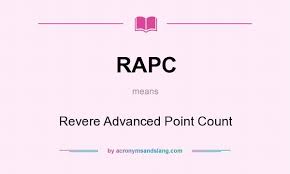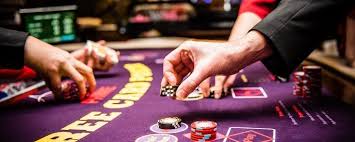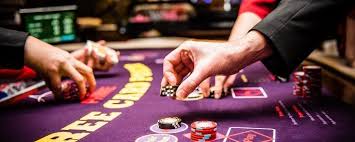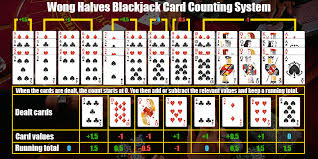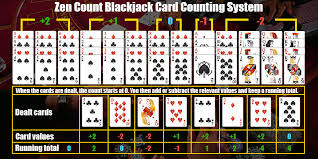
The Paroli Betting System is considered one of the easier systems to use for blackjack. While not used by many players, the players that do use it, swear it can make for a very profitable blackjack session.
How It Works
The Paroli system is known as a positive progression betting system because you double your bet after each win. So, if your first bet is $5 and you win, your next bet would be $10. If you win that $10 bet, your next bet would be $20, and that doubling continues as long as you win.
Once you lose, you start back at your original first bet amount for the next bet. It is clear to see the simplicity of this system. You only increase your bet if you win, and it should be easy to figure out how much double your last bet would be.
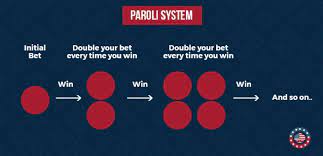
When initially developed, there was no “win limit” clearly defined. As long as you win, you will double the next bet. Unfortunately, if you hit a win streak that keeps you doubling your last bet, you’ll eventually lose a bet total that will include your previous profits.
With that in mind, a win limit of 3 in a row, has become the standard stop doubling point. For instance, if you win 3 times in a row, your 4th bet would go back to the original minimum bet.
This system can give you lots of short-term success. It can also be fun to use because you’re basically risking only profits when you hit a winning streak.
Let’s look at some examples. The tables below look at if you’re playing at a $5 minimum table, and you run into short or longer winning streaks or losing streaks:
WINNING STREAKS
| Hand | Bet Amount | Win/Lose | Amount Won/Loss | Cumulative Profit/Loss | |
| 1 | 5 | Lose | -5 | -5 | |
| 2 | 5 | Win | 5 | 0 | |
| 3 | 10 | Win | 10 | 10 | |
| 4 | 20 | Lose | -20 | -10 | |
| 5 | 5 | Win | 5 | 5 | |
| 6 | 10 | Win | 10 | 15 | |
| 7 | 20 | Lose | -20 | -5 | |
| 8 | 5 | Win | 5 | 0 | |
| 9 | 10 | Win | 10 | 10 | |
| 10 | 20 | Lose | -20 | -10 | |
| Total Amount Bet | 110 | ||||
| 2 Hand winning streak – After 10 hands, you’ve bet $110 to lose $10 | |||||
| Hand | Bet Amount | Win/Lose | Amount Won/Loss | Cumulative Profit/Loss | |
| 1 | 5 | Lose | -5 | -5 | |
| 2 | 5 | Win | 5 | 0 | |
| 3 | 10 | Win | 10 | 10 | |
| 4 | 20 | Win | 20 | 30 | |
| 5 | 5 | Lose | -5 | 25 | |
| 6 | 5 | Win | 5 | 30 | |
| 7 | 10 | Win | 10 | 40 | |
| 8 | 20 | Win | 20 | 60 | |
| 9 | 5 | Lose | -5 | 55 | |
| 10 | 5 | Win | 5 | 60 | |
| Total Amount Bet | 90 | ||||
| 3 Hand winning streak – After 10 hands, you’ve bet $90 to profit $60 | |||||
| Hand | Bet Amount | Win/Lose | Amount Won/Loss | Cumulative Profit/Loss | |
| 1 | 5 | Lose | -5 | -5 | |
| 2 | 5 | Win | 5 | 0 | |
| 3 | 10 | Win | 10 | 10 | |
| 4 | 20 | Win | 20 | 30 | |
| 5 | 5 | Win | 5 | 35 | |
| 6 | 10 | Lose | -10 | 25 | |
| 7 | 5 | Win | 5 | 30 | |
| 8 | 10 | Win | 10 | 40 | |
| 9 | 20 | Win | 20 | 60 | |
| 10 | 5 | Win | 5 | 65 | |
| Total Amount Bet | 85 | ||||
| 4 Hand winning streak – After 10 hands, you’ve bet $105 to profit $65 | |||||
LOSING STREAKS
| Hand | Bet Amount | Win/Lose | Amount Won/Loss | Cumulative Profit/Loss | |
| 1 | 5 | Win | 5 | 5 | |
| 2 | 10 | Lose | -10 | -5 | |
| 3 | 5 | Lose | -5 | -10 | |
| 4 | 5 | Win | 5 | -5 | |
| 5 | 10 | Lose | -10 | -15 | |
| 6 | 5 | Lose | -5 | -20 | |
| 7 | 5 | Win | 5 | -15 | |
| 8 | 10 | Lose | -10 | -25 | |
| 9 | 5 | Lose | -5 | -30 | |
| 10 | 5 | Win | 5 | -25 | |
| Total Amount Bet | 65 | ||||
| 2 Hand losing streak – After 10 hand, you’ve bet $65 to lose $20 | |||||
| Hand | Bet Amount | Win/Lose | Amount Won/Loss | Cumulative Profit/Loss | |
| 1 | 5 | Win | 5 | 5 | |
| 2 | 10 | Lose | -10 | -5 | |
| 3 | 5 | Lose | -5 | -10 | |
| 4 | 5 | Lose | -5 | -15 | |
| 5 | 5 | Win | 5 | -10 | |
| 6 | 10 | Lose | -10 | -20 | |
| 7 | 5 | Lose | -5 | -25 | |
| 8 | 5 | Lose | -5 | -30 | |
| 9 | 5 | Win | 5 | -25 | |
| 10 | 10 | Lose | -10 | -35 | |
| Total Amount Bet | 65 | ||||
| 3 Hand losing streak – After 10 hands, you’ve bet $65 to lose $35 | |||||
| Hand | Bet Amount | Win/Lose | Amount Won/Loss | Cumulative Profit/Loss | |
| 1 | 5 | Win | 5 | 5 | |
| 2 | 10 | Lose | -10 | -5 | |
| 3 | 5 | Lose | -5 | -10 | |
| 4 | 5 | Lose | -5 | -15 | |
| 5 | 5 | Lose | -5 | -20 | |
| 6 | 5 | Win | 5 | –15 | |
| 7 | 10 | Lose | -10 | -25 | |
| 8 | 5 | Lose | -5 | -30 | |
| 9 | 5 | Lose | -5 | -25 | |
| 10 | 5 | Lose | -5 | -30 | |
| Total Amount Bet | 60 | ||||
| 4 Hand losing streak – After 10 hands, you’ve bet $60 to lose $30 |
As you look at these tables (very simple examples for demonstration purposes), with a winning streak of hands, you can profit a decent amount with relatively little total bet.
Please note, that my example is based on having a win limit of 3 wins a row and then drop back to the minimum bet. If you were to keep doubling the bet with each win, a 4 wins in a row streak would result in a $65 profit. The same as the 3 wins in a row. However, because your largest bet of $80 is a loser, your total bet amount is $235.
I think that proves the limitations of this system. If you continue to double the bet size after every win, once you do lose, you pretty much lose all your previous profit.
What is likeable about this system is that it will keep your losses to a minimum. If you run into a losing streak, you will only be losing a minimum bet for the most part because you only increase your bet on wins.
Reality of Use
Keeping in mind that it’s more likely than not that you’ll run into a losing streak, (because, the odds of winning are against you from the start) you can still enjoy playing, knowing that you shouldn’t lose a great deal of money.
At a minimum $5 bet table, you can lose 7 bets in a row ($35), and it will only take 3 wins in a row to break even.
If the cards run good for you, the positive progression of the system allows for moderate profits.
Final Thoughts
The simplicity of the system is what makes it a popular choice for beginners, but experienced players realize that it’s that same simplicity that makes it less effective. It ties you into a betting pattern that only takes into account whether the previous hand was a win or loss. Ideally, you want to be betting big when the cards are favorable. Even if you lose a hand, you want to make a larger bet if the deck is still favorable. With this system, if you lose a bet, you drop back to a minimum bet even though the deck may be highly favorable. (which you would know if you were additionally counting cards) What’s best about this system is that it can keep your losses to a minimum.








